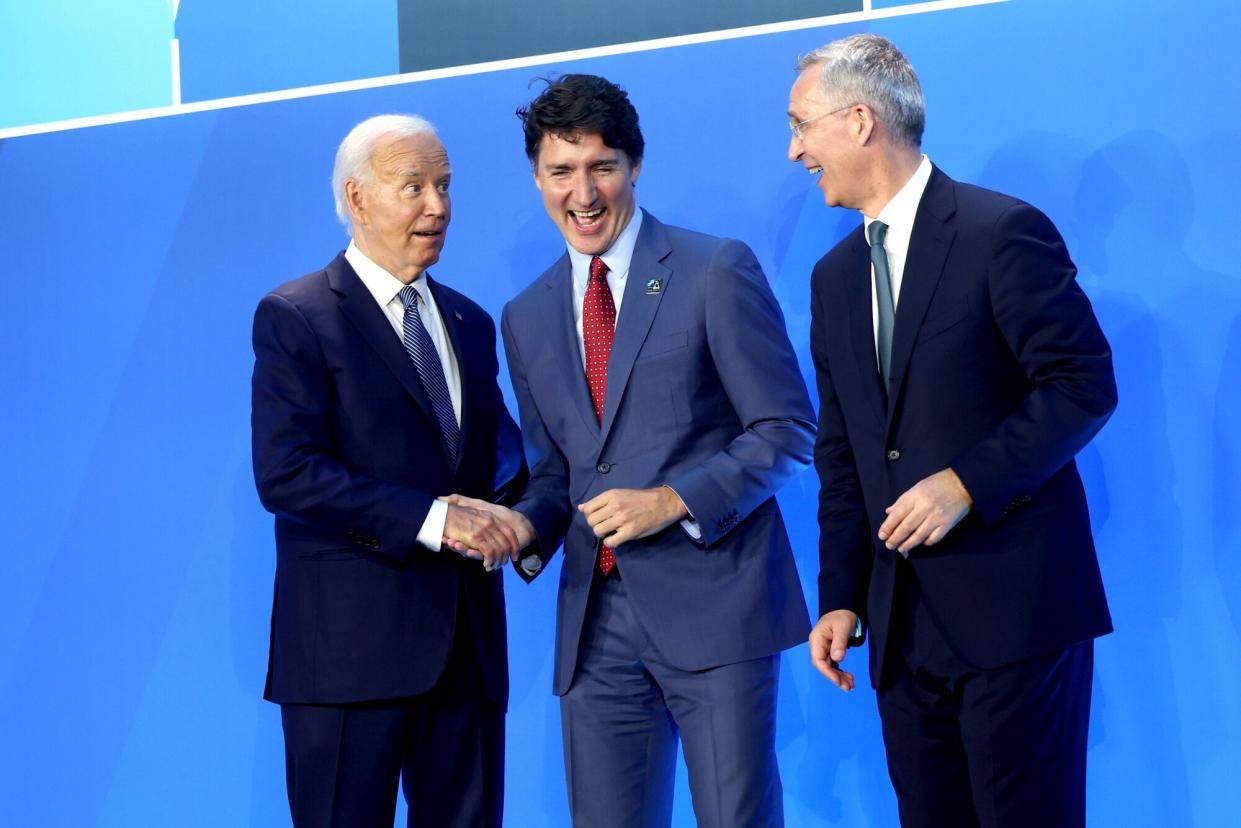Canada Plans to Buy Submarines, Inching Closer to NATO Defense Target

(Bloomberg) -- Canada said it would begin the process of buying a fleet of submarines that will likely bolster its defense spending to meet NATO targets, as Prime Minister Justin Trudeau attempts to defuse criticism from allies.
Most Read from Bloomberg
Saudis Warned G-7 Over Russia Seizures With Debt Sale Threat
Saudi Prince’s Trillion-Dollar Makeover Faces Funding Cutbacks
Modi’s Embrace of Putin Irks Biden Team Pushing Support for Kyiv
Archegos’ Bill Hwang Convicted of Fraud, Market Manipulation
Stocks See Big Rotation as Yields Sink on Fed Bets: Markets Wrap
The government said it’s taking the first step toward procuring as many as 12 conventionally powered submarines capable of operating under ice, according to a news release.
“As the country with the longest coastline in the world, Canada needs a new fleet of submarines,” Defense Minister Bill Blair said in a statement Wednesday. “This new fleet will enable Canada to protect its sovereignty in a changing world, and make valuable, high-end contributions to the security of our partners and NATO allies.”
Blair made the announcement in Washington, the site of this week’s North American Treaty Organization summit, where Trudeau has faced attacks from US Republican leaders over Canada’s failure to keep its promise to raise defense spending to at least 2% of gross domestic product.
Later Wednesday, Blair announced he had signed a trilateral agreement with Germany and Norway to establish a maritime security partnership in the North Atlantic and collaborate on defense production. The two European countries build submarines, but Canada has not reached a decision about where it will acquire the equipment.
“As the international security situation becomes more unstable, working with like-minded allies is more important than ever,” he said in a statement.
In a speech Monday, US House Speaker Mike Johnson called Canada’s low level of defense outlays “shameful,” while Senate Republican Leader Mitch McConnell said it was “time for our northern ally to invest seriously in the hard power required” to preserve security.
Trudeau’s government didn’t provide a timeline or a dollar amount for the submarine acquisition. A senior government official, speaking in a background briefing to reporters, said it would have more to announce on Thursday.
The country also pledged C$500 million ($367 million) in new military assistance to Ukraine before a bilateral meeting between Trudeau and Ukrainian President Volodymyr Zelenskiy. Canada, which does not have F-16 jets to contribute to the war effort, will take over the leading role on training fighter pilots in Ukraine.
The announcements of new submarines and also signals growing concern that climate change is making Canada’s Arctic more vulnerable to aggression from Russia and China.
Rival nations are “exploring Arctic waters and the sea floor, probing our infrastructure and collecting intelligence. In the maritime domain, Russian submarines are probing widely across the Atlantic, Arctic and Pacific Oceans and China is rapidly expanding its underwater fleet,” the government said in its statement.
The specter of a second term in the White House for Donald Trump — who has previously threatened not to come to the aid of allies who fail to spend enough on defense — has added urgency to Canada’s military spending plans.
NATO allies first agreed to the 2% threshold in 2006 and reaffirmed that promise in 2014 and 2023. This year, 23 of 32 members will meet or exceed it, but Canada expects to spend just 1.33% of GDP on defense.
Another senior government official said Canada was still working on a timeline for ramping up military spending that won’t throw its fiscal plans off track. The government has pledged to limit budget deficits and to lower them to 1% of GDP by 2026.
(Updates on Canada signing a trilateral agreement with Germany and Norway, starting in fifth paragraph.)
Most Read from Bloomberg Businessweek
Ukraine Is Fighting Russia With Toy Drones and Duct-Taped Bombs
At SpaceX, Elon Musk’s Own Brand of Cancel Culture Is Thriving
©2024 Bloomberg L.P.



